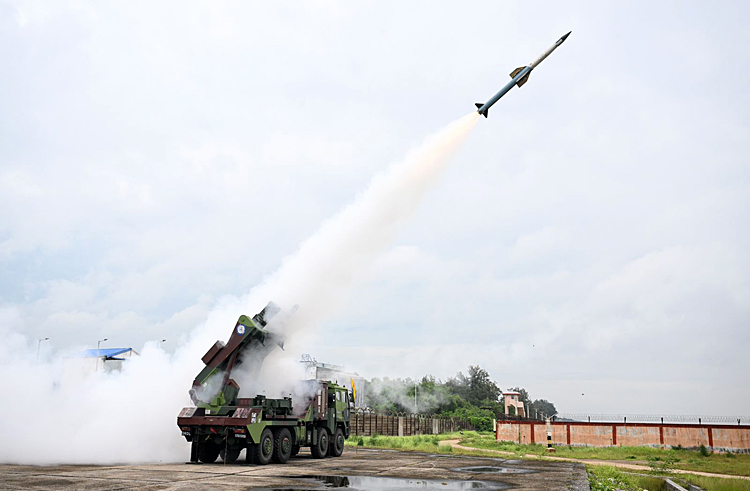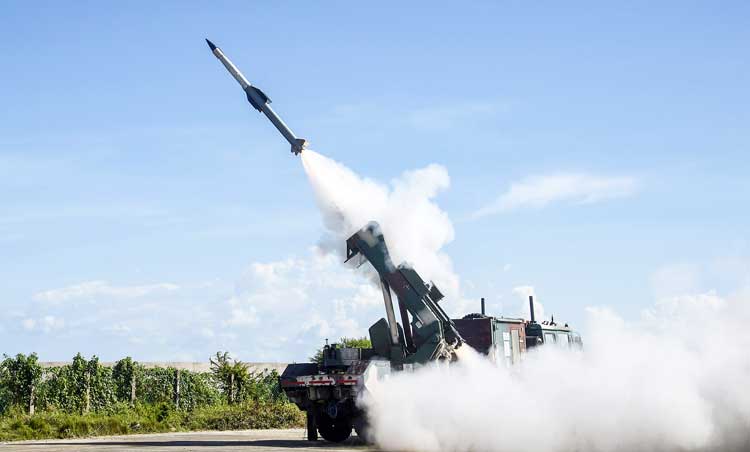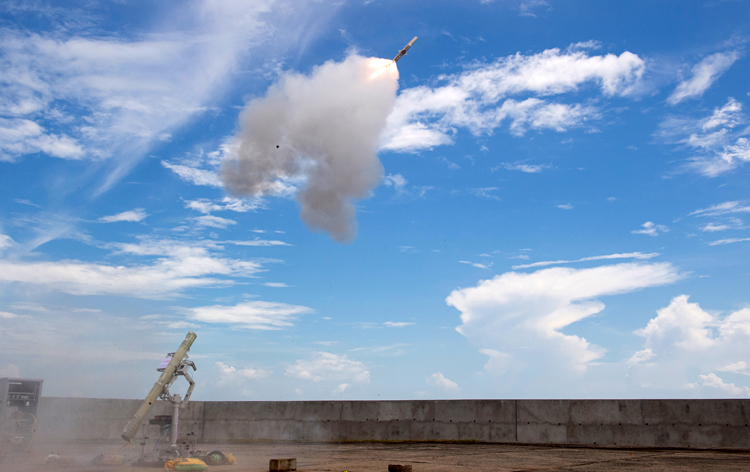INDIAN ARMED FORCES CHIEFS ON OUR RELENTLESS AND FOCUSED PUBLISHING EFFORTS

The insightful articles, inspiring narrations and analytical perspectives presented by the Editorial Team, establish an alluring connect with the reader. My compliments and best wishes to SP Guide Publications.

"Over the past 60 years, the growth of SP Guide Publications has mirrored the rising stature of Indian Navy. Its well-researched and informative magazines on Defence and Aerospace sector have served to shape an educated opinion of our military personnel, policy makers and the public alike. I wish SP's Publication team continued success, fair winds and following seas in all future endeavour!"

Since, its inception in 1964, SP Guide Publications has consistently demonstrated commitment to high-quality journalism in the aerospace and defence sectors, earning a well-deserved reputation as Asia's largest media house in this domain. I wish SP Guide Publications continued success in its pursuit of excellence.
- Appointments Committee of Cabinet approves one-month extension in service of Chief of the Army Staff
- Prime Minister witnesses 'Bharat Shakti' – a Tri-Services Firing and Manoeuvre Exercise in Pokhran, Rajasthan
- Interim Defence Budget 2024-25 — An Analysis
- Union Defence budget 2024
- Indian Army: In quest of greater firepower and policy recommendations for gaps
- Indian Army Annual Press Conference 2024
- Tata Boeing Aerospace Delivers 250 AH-64 Apache Fuselages, Manufactured in India
China Acknowledges India's IADWS
India's successful test of its laser-based Integrated Air Defence Weapon System (IADWS) marks a major leap in defence modernisation, earning rare acknowledgment from China and signalling significant regional and strategic implications
 |
The Author is Former Director General of Information Systems and A Special Forces Veteran, Indian Army |

Chinese military experts have acknowledged the integration of a high-power laser-based Directed Energy Weapon (DEW) in India's Integrated Air Defence Weapon System (IADWS) successfully tested on August 24, 2025 off the coast of Odisha, marking a notable leap in the country's defence modernisation programme. India already possessed layered air defence capabilities through its Quick Reaction Surface-to-Air Missiles (QRSAMs) and Very Short-Range Air Defence Systems (VSHORADS), however, the addition of a DEW elevates its technological standing, placing it in a small group of advanced military powers like the Russia, China, Israel, Germany, The US and the UK.
India integrated a high-power laser-based Directed Energy Weapon (DEW) into its Integrated Air Defence Weapon System (IADWS) and successfully tested it, marking a notable leap in the country's defence modernisation programme
The first trial of IADWS is based on DRDO's previous ventures such as DURGA-II, the Tri-Netra programme, and the KALI accelerator, which are intended to further solidify the country's DEW arsenal. With increasing drone penetrations along the Line of Control and mounting regional missile threats, these systems will be invaluable in future warfare. India's successful demonstration of DEW not only places it firmly in the international league of sophisticated military nations but also marks a technological leap in the age of modern warfare.

The IADWS is designed as a multi-layered system focused on protecting against low- to mid-altitude aerial threats. Its application is especially relevant in countering drones, cruise missiles, helicopters, and low-flying aircraft—categories of weapons systems increasingly employed in modern hybrid and asymmetric warfare scenarios. The QRSAM element provides vehicle-mounted missile defence against fast-moving threats at short ranges, while the VSHORADS adds portability and rapid-response capability to the layered defence. However, it is the high-power laser component that distinguishes the system from conventional air defence architectures.
India's successful demonstration of DEW not only places it firmly in the international league of sophisticated military nations but also marks a technological leap in the age of modern warfare.
Unlike kinetic interceptors, a DEW system offers light-speed target engagement, silent operations, high firing sustainability, and cost-effectiveness, as it can neutralise multiple incoming targets without the need for expensive missiles. The weapon's accuracy, versatility, and low collateral damage also make it ideal for urban or sensitive airspace operations. During the flight-tests, three different targets, including two high-speed fixed wing Unmanned Aerial Vehicle targets and a multi-copter drone were simultaneously engaged and destroyed completely by the QRSAM, VSHORADS and high energy laser weapon system at different ranges and altitudes. All the weapon system components, including the missile systems and drone detection and destruction system, command and control mechanism and radars, performed flawlessly.

Following the successful test of the IADWS, three-and-half months after Operation 'Sindoor', Defence Minister Rajnath Singh congratulated the Defence Research and Development Organisation (DRDO) and the Armed Forces, saying, "I congratulate the DRDO, Indian Armed Forces and the industry for successful development of IADWS. This unique flight test has established the multi-layered air-defence capability of our country and is going to strengthen area defence for important facilities against enemy aerial threats."
China's defence expert said that India's IADWS is "remarkable progress" and is for hitting drones, helicopters, and low-flying planes in a limited range. There are only a few countries in the world that have deployed combat-ready laser systems.
China, too, has been working on its own DEW platforms like the LW-30 laser 'drone killer' system but Beijing noted the successful test of its IADWS. China's defence expert Wan Yan'an told Global Times that India's IADWS is "remarkable progress" and is for hitting drones, helicopters, and low-flying planes in a limited range. "There are only a few countries in the world that have deployed combat-ready laser systems," he added. China has positioned itself as a leader in DEW deployment, but its experts' acknowledgment of India's capability signals recognition of New Delhi's rising technological edge.

The comments of the Chinese military experts with reference to India's IADWS are considered significant, since the People's Liberation Army (PLA), which is heavily investing in modern weapons for its use, as well as providing a significant amount of weapons to Pakistan. According to a recent report by Stockholm International Peace Research Institute (SIPRI), China supplied over 81 per cent of Pakistan's military hardware, which the Pakistan military sought to use against India in the recent Operation 'Sindoor'. In the wake of Pakistan's reliance on Chinese systems, China's concerns over India acquiring indigenous DEW technology carries additional weight.
The geopolitical implications of this advancement are considerable. India's demonstrated capacity to field high-power directed energy systems not only strengthens its air defence but also alters the balance of power in the region, particularly in countering drone swarms and low-cost aerial threats, which Pakistan has increasingly deployed across the border. In parallel, this achievement boosts India's indigenous defence R&D credibility, reinforcing the country's ambitions under the "Atmanirbhar Bharat" initiative to reduce dependence on foreign imports. The ability to domestically manufactured advanced missile systems alongside futuristic DEW platforms also suggests a long-term trajectory toward self-reliance, resilience in critical sectors, and potential arms exports in the medium term.





